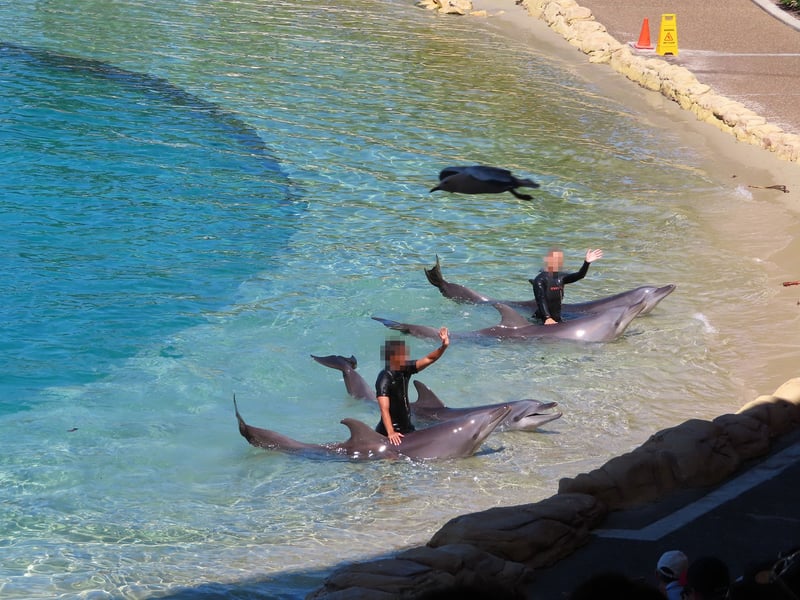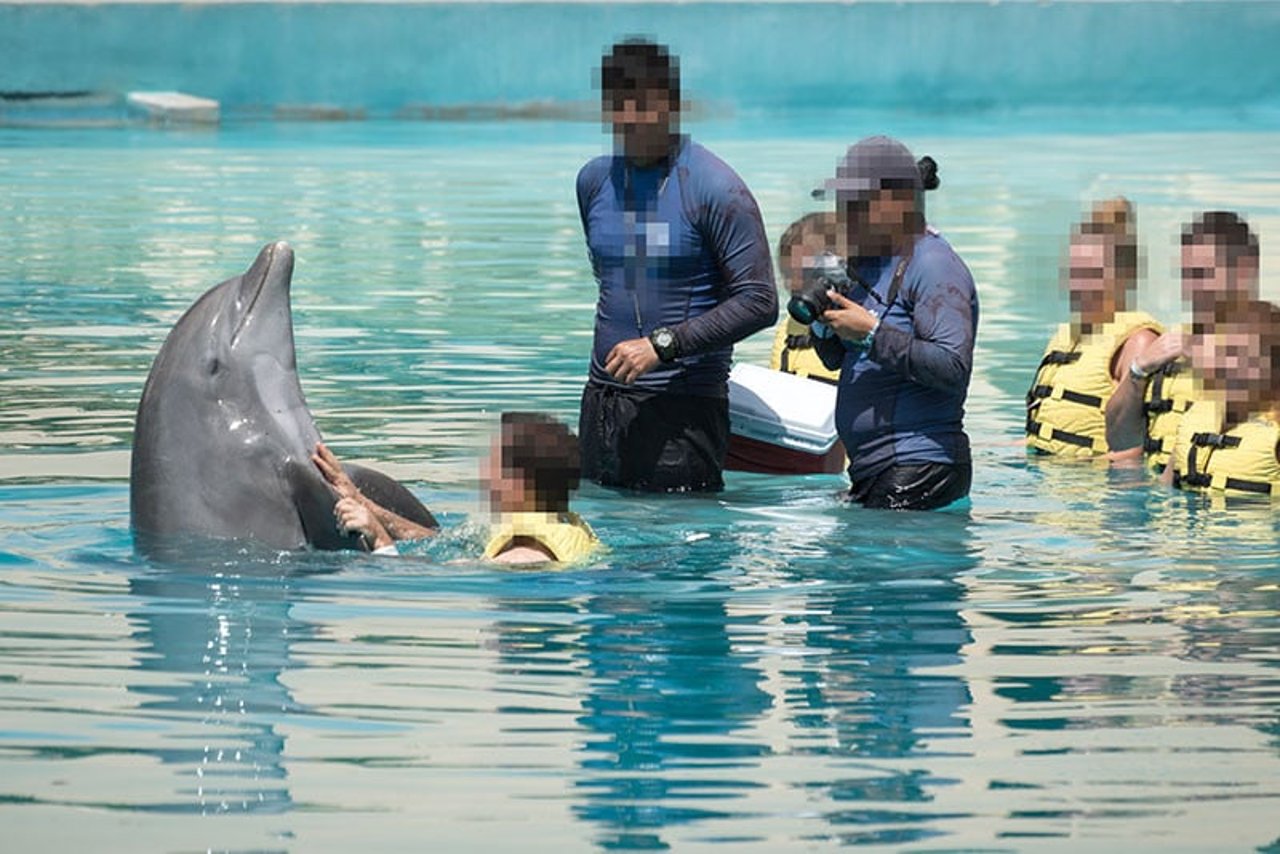
1st of September marks the start of horrifying annual dolphin drive hunt in Taiji, Japan. Find out how this cruel practice is linked to the captive entertainment industry.
I hate the 1st of September. It is traditionally the day that the dolphin drive hunt season starts in Taiji, Japan, when dolphins are rounded up by people on boats banging poles in the water to confuse the animals and herd them into a cove. There they are either butchered for their meat or separated off to be sold into the captive dolphin entertainment industry. The whole thing is like something from a horror film – churning waters, red and bloodied.
The Oscar-winning investigative documentary The Cove is all about this harrowing event which takes place for six months of the year and works on a quota system. The Taiji drive hunt is covered again in last year’s Netflix documentary, Seaspiracy. Each year, campaigners for the Dolphin Project, Sea Shepherd, Japanese NGO Life Investigation Agency and other campaigning groups head to Taiji to monitor the captures, share video footage and bear witness to the horrific drives so that they can be seen across the world.
The 2023 drive hunt quota has been published as 1824 whales and dolphins. To highlight the effect of the captive dolphin industry, in the 2017/2018 drive, 541 dolphins were taken from the wild in Taiji, of which 96 were taken alive for the dolphin entertainment industry. All of the bottlenose dolphins captured were taken live – presumably because of their value to the public display industry.
Many venues now would not be associated with dolphins caught in the Taiji drives. In fact many venues, especially in the USA and Europe, distance themselves from wild capture altogether and instead breed their dolphins in captivity.
Yet, as much as they distance themselves, are their hands clean of these horrific hunts? Would they go ahead without the existence of the captive dolphin industry?
Possibly not. The money from these drives is not made through the meat of killed dolphins which are cut up and sold for a few hundred dollars. The real money is from the dolphins captured alive which can sell for tens of thousands of dollars.
So purely by perpetuating a cruel industry which creates the conditions where the dolphin hunters can make money selling live, captured dolphins into the system, dolphinariums – even if they are captive breeding* – are complicit. When the demand for captive dolphin entertainment stops, the Taiji hunts will surely stop, too.
*Captive breeding is sold to us as the more ethical way of keeping the tanks full because the associated visual from captive breeding is a new dolphin calf rather than bloodied water and bodies, but there are countless welfare issues involved in captive breeding. Read more here.
Make a difference. Join our community.
We campaign to improve animal's lives in the UK and around the world. Why not join us today?
When the demand for captive dolphin entertainment stops, the Taiji hunts will surely stop, too.
